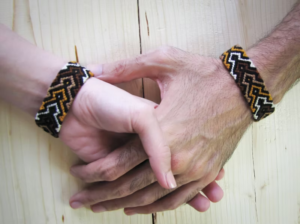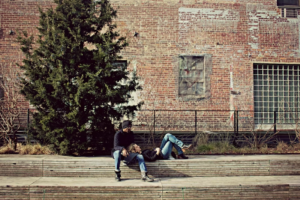What Flirting Body Language Really Looks Like, According to Experts
Understanding flirting body language is both a skill and a science. From small touches to long eye contact, non-verbal signs play a big role in romantic communication. While some gestures are clear, others can be misunderstood. Here’s what experts say about common flirting signs and how to recognize them.

A light touch on the arm or shoulder can say a lot. Body language expert Traci Brown explains, “People touch when they want to connect on a deeper level.” Whether it’s a quick brush of the hand or a longer touch, these small actions can show interest. However, if the touch seems more like an accident, it may not mean anything special.

A warm, genuine smile is one of the clearest flirting signs. Licensed mental health counselor Wale Okerayi says, “Smiling shows you enjoy someone’s presence and want to continue the conversation.” It’s a simple but powerful way to make someone feel welcomed and noticed.

Long eye contact is often a strong sign of attraction. Brown describes it as “gazing with interest,” a classic sign of connection. If someone keeps looking into your eyes, it can mean they are focused on you. But if they keep looking away, they might be distracted or not interested.

Leaning in when talking shows engagement. “When someone leans closer, it means they are paying attention and interested,” says Okerayi. This movement not only shows curiosity but also creates a sense of closeness.

A unique but interesting sign is scratching someone’s palm during a handshake or touch. In some cultures, this small motion can be flirtatious, especially in African and Caribbean communities. While it may seem playful, it can signal deeper interest. However, understanding the full context is important.

If someone looks relaxed—arms at their sides, legs uncrossed—it means they are comfortable and engaged. Flirting happens more easily when both people feel at ease. On the other hand, crossed arms or stiff posture might suggest discomfort or lack of interest, says Brown. Being relaxed helps create a positive connection.

When someone sits or stands closer than usual, it’s often a way of showing attraction. “People move toward things they like,” Brown explains. But it’s also important to respect personal space—what seems like flirting to one person might feel uncomfortable to another.

Classic flirting signs include biting the lip or tilting the head slightly. These movements, combined with playful or focused eye contact, can show attraction. However, they can also be signs of nervousness, so it’s important to look at the full picture.

Flirting includes both spoken and unspoken signals, with body language playing a key role. From light touches to deep gazes, these gestures help express interest. Understanding cultural differences, context, and comfort levels is essential in reading these signs correctly.

Flirting should always be respectful and comfortable for both people. If someone feels uneasy, it’s important to address it openly and kindly. Clear communication ensures positive and meaningful connections.
Whether it’s a smile, a lean, or even a playful hand touch, flirting is subtle but powerful. By noticing these signals, you can feel more confident and aware in romantic interactions.
